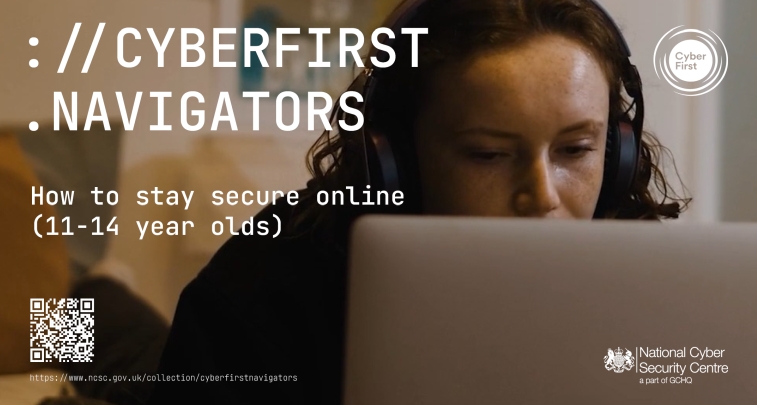Differentiation – How edtech is improving it

David Hillyard considers how evolutions in education policy and advances in technology have altered the nature of classroom differentiation for the better

When I was a lad, differentiation was about whether you were on the ‘green’ table or – heaven forbid – the ‘red’ table. Occasionally, a student would disappear off to The Terrapin Building for ‘a little bit of extra help’.
Exactly what took place there was a mystery to anyone who wasn’t invited. Back then, it was simply accepted that Johnny was ‘a bit thick’ – that he’d manage what he could, and probably wouldn’t make a big splash in adulthood.
The irony was that Johnny was actually the one who ended up with the big house and posh car because he became an electrician. It would seem maths and physics weren’t such a barrier for him after all – at least not when they served a clear purpose.
A dangerous path
Even when I reached sixth form, there was little expectation of teachers doing anything differently when it came to differentiation.
The job remained largely one of imparting knowledge, albeit now with a little more empathy and more frequent one-to-one teacher interactions, with the wooden sticks previously used to hit the naughty kids consigned to the history books.
Fast forward to 2008, and we saw the introduction of the Assessment for Learning Strategy, or AfL. Lessons were henceforth to be ‘Planned to appropriately challenging learning objectives and intended learning outcomes using success criteria’.
The quest for ‘outstanding lessons’ had begun in earnest, prompting differentiation to take a peculiar turn. Teachers were now enthusing about clear objectives and outcomes, writing them on the board to be copied down eagerly by students.
“All must, most should, some might,” ran the new mantra. Different tasks sheets for different groups of learners became the norm.
Thus were the level 4, level 5 and level 6 differentiation worksheets born. No lesson was complete without different work for the high-, middle- and low-ability students – the bluebirds, buzzards and wombats.
This was a dangerous path to embark on – assuming all students could be grouped by their previous attainment. In the worst cases, glass ceilings and self-fulfilling prophecies became rife.
Still, boxes were getting ticked on observation forms, and teachers were keeping busier than ever, assessing themselves against all these new frameworks.
The powers that be therefore assumed all was well. But there remained a nagging doubt in my mind – shouldn’t all learners have an equal opportunity to succeed in all tasks?
Expectations for all
While the underlying strategy of AfL was sound, its application – as is so often the case – was sometimes misguided. Thankfully, things have since changed. Now, high-performance learning preaches high expectations for all and scaffolding up, rather than differentiating down.
This is long overdue, and now being practised with technology playing a pivotal role as a de facto TA. That said, there are still plenty of misconceptions regarding technology being perpetuated in schools.
Technology isn’t replacing teachers; it’s facilitating more efficient teaching practices, whereby provision can be tailored to individual students based on their needs.
We are now well into an age where virtually all students have some form of access to portable computing devices, with schools harnessing new opportunities for learning as a result.
The students of today have certain expectations of what education can – and indeed should – look like. Making that happen means embracing the promise of technology to drive the learning experience forwards.
Even better outcomes
Tools like Socrative have become a staple in leading whole-group questioning, ensuring that no students can disappear at the back of the class.
We should now create more opportunities for one-to-one discussion between students and teachers, where ‘why’ questions are asked more frequently than ‘what’ questions, while other students make their own progress independently.
Of course, the challenge is finding the time for all this during a busy lesson. Differentiating with technology shouldn’t increase workload, but rather facilitate an improved work-life balance and even better outcomes.
One solution is to use videos students can pause, rewind and watch again, untethering the teacher from the front of the class and changing their role from ‘sage on the stage’ to ‘guide by the side’.
There are many sources of great video content available online, but it’s also possible to create great content yourself using a mobile phone to capture important aspects of teaching episodes and demonstrations.
Software like Showbie can be used to collect assignments, but also provide more meaningful, powerful and less time-consuming forms of feedback, such as voice notes.
You can also use software to create dynamic seating plans that allow students to help peers who may be struggling and encourage rich conversations between students who are excelling.
Elsewhere, the likes of Smart Revise and Tassomai can automatically set personalised questions for computing and science lessons respectively, helping students to retain more knowledge over time and beat the forgetting curve.
Deciding on outcomes
Over the years, ‘differentiation by outcome’ has become a taboo concept – but was it simply misunderstood? Is it necessary for a teacher to specify the outcome of a task, or could students demonstrate their learning by deciding their own outcomes instead?
Learning can be amply demonstrated with the aid of a video clip, mind map, stop-motion animation, or brochure, to name but a few. The following tools all have much to offer:
- Movie Maker
- Padlet for display boards
- Popplet for mind maps
- Explain Everything for modelling an IWB
- Canva for assorted display formats
The key is to engage students by putting them in the driver’s seat, while at the same time freeing up the teacher’s time to support, question, direct and challenge them. At the same time, however, we shouldn’t forget the basics.
The future’s bright
The Post-It app for iOS and Android can be used to collate handwritten student thoughts in a digital format. Microsoft OneNote’s built-in Ink Math Assistant can help students solve handwritten maths problems, with an accompanying step-by-step guide to reaching the solution.
You could even use a basic smartphone camera to share lesson information in advance by taking a picture of your whiteboard.
Technology enables students to create high-quality work they can feel proud of, while affording them the chance to make as many mistakes as they need to along the way – undoing, deleting, refining as they go, before ultimately delivering the best-possible finished product they can.
There can be no doubt that the future of education lies with technology. Augmented and virtual reality both promise whole new experiences for learners.
Examination boards are investigating the potential for fully online exams and adaptive questioning that will remove the need for tiered papers.
The recent need for blended learning approaches, while not perfect, have shone a light on a multitude of alternative possibilities. The upshot of all this is that differentiation isn’t about supporting weaker students – it’s about enhancing, engaging and enabling the best possible learning experience for all.
The takeaway
Differentiation is no longer about just supporting ‘low ability’ students, or providing different worksheets to different groups.
The focus is now much more on enhancing, engaging and enabling all students on their own personal learning journey.
By making effective use of technology an integral part of their planning, delivery and assessment, teachers can expect the best from all of their students by scaffolding up, rather than differentiating down.
With the aid of today’s technology, students can become active participants in the classroom dynamic, and play an even greater role in shaping their own learning experience.
David Hillyard has been a secondary school teacher for 25 years, having previously held roles that include head of department, assistant headteacher, chair of governors and subject leader for ITT with the University of Gloucestershire. Now better known as ‘the Dave from Craig ‘n’ Dave’, he supports thousands of schools, teachers and students with digital classroom resources – for more information, visit craigndave.org or follow @craigndave1.












